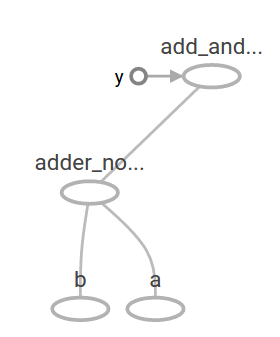安裝
TensorFlow分為CPU和GPU兩個版本军拟,如果系統(tǒng)沒有NVIDIA? GPU炸裆,就安裝CPU版本,GPU版本的TensorFlow計(jì)算速度更快迁霎,如果滿足以下要求,可以安裝GPU版本
- CUDA? Toolkit 8.0. CUDA是一種由NVIDIA推出的通用并行計(jì)算架構(gòu)百宇,該架構(gòu)使GPU能夠解決復(fù)雜的計(jì)算問題考廉。它包含了CUDA指令集架構(gòu)(ISA)以及GPU內(nèi)部的并行計(jì)算引擎。CUDA? Toolkit是一種針對支持CUDA功能的GPU(圖形處理器)的C語言開發(fā)環(huán)境携御。
- CUDA? Toolkit 8.0的NVIDIA驅(qū)動
- cuDNN v5.1.是用于深度神經(jīng)網(wǎng)絡(luò)的GPU加速庫
- 顯卡的CUDA計(jì)算能力在3.0以上
安裝方式
- pip
原生pip直接安裝TensorFlow而不需要通過虛擬環(huán)境昌粤,因此pip安裝的TensorFlow存放于其他python庫的路徑,并且啄刹,可以在計(jì)算機(jī)的任何路徑下運(yùn)行TensorFlow
python3.5版本里涮坐,安裝CPU版本在命令提示符中鍵入pip install --upgrade tensorflow,安裝GPU版本鍵入pip install --upgrade tensorflow-gpu
截止17年5月TensorFlow還不支持在python3.6中pip安裝 - Anaconda
可以用conda指令創(chuàng)建虛擬環(huán)境誓军,但是推薦使用在anaconda下pip install.創(chuàng)建TensorFlow環(huán)境安裝袱讹,TensorFlow庫存在于創(chuàng)建的虛擬環(huán)境中,運(yùn)行時有所限制昵时。
TensorFlow起步
起步前的準(zhǔn)備工作:python的編程基礎(chǔ)捷雕、矩陣的簡單數(shù)學(xué)知識、機(jī)器學(xué)習(xí)
TensorFlow提供多種API壹甥。底層API(TensorFlow Core)提供完整的程序控制救巷。高級API建立在core之上,高級API更加容易學(xué)習(xí)應(yīng)用盹廷。像tf.contrib.learn幫助你管理數(shù)據(jù)集征绸,學(xué)習(xí)器,訓(xùn)練和推斷俄占。注意名字中包含contrib的高級API還在開發(fā)當(dāng)中管怠,在以后的版本可能會改變或者廢棄。
指南先介紹底層API缸榄,之后會用tf.contrib.learn來得到相同的模型渤弛。了解core可以更加了解在高級API使用中的內(nèi)部運(yùn)行機(jī)制。
Tensors
TensorFlow的數(shù)據(jù)核心單元是tensor(張量)甚带∷希可以把張量想象成一個n維的數(shù)組或列表。張量的rank(秩)就是維度的數(shù)量
3 # a rank 0 tensor; this is a scalar with shape []
[1. ,2., 3.] # a rank 1 tensor; this is a vector with shape [3]
[[1., 2., 3.], [4., 5., 6.]] # a rank 2 tensor; a matrix with shape [2, 3]
[[[1., 2., 3.]], [[7., 8., 9.]]] # a rank 3 tensor with shape [2, 1, 3]
TensorFlow Core
導(dǎo)入TensorFlow的所有類鹰贵、方法和屬性:import tensorflow as tf
the computational graph(計(jì)算圖)
你可以認(rèn)為TensorFlow核心代碼有兩部分組成:
- 構(gòu)建計(jì)算圖
- 執(zhí)行計(jì)算圖
計(jì)算圖是由TensorFlow operation(節(jié)點(diǎn))組成晴氨。讓我們構(gòu)建一個簡單的計(jì)算圖。每個節(jié)點(diǎn)有0或更多張量作為輸入然后產(chǎn)生一個張量作為輸出碉输。有一類節(jié)點(diǎn)是常量籽前。所有的TensorFlow常量沒有輸入,它輸出一個值在內(nèi)部存儲。我們創(chuàng)建兩個浮點(diǎn)型常量node1和node2如下:
node1 = tf.constant(3.0, tf.float32)
node2 = tf.constant(4.0) # also tf.float32 implicitly
print(node1, node2)
打印結(jié)果
Tensor("Const:0", shape=(), dtype=float32) Tensor("Const_1:0", shape=(), dtype=float32)
注意:打印node并沒有輸出3.0和4.0枝哄,而是node的本身屬性肄梨,在被計(jì)算的時候才會產(chǎn)生3.0和4.0,為了正確計(jì)算節(jié)點(diǎn)挠锥,我們必須在對話(session)中執(zhí)行計(jì)算圖众羡。session壓縮了控制和TensorFlow的狀態(tài)。
接下來的代碼構(gòu)造了session對象并用它的方法run執(zhí)行足夠的計(jì)算圖來計(jì)算node1和node2:
sess = tf.Session()
print(sess.run([node1, node2]))
于是我們可以看到期望的輸出
[3.0, 4.0]
我們可以組合張量節(jié)點(diǎn)來構(gòu)造更復(fù)雜的計(jì)算蓖租,比如粱侣,我們可以使兩個常量節(jié)點(diǎn)相加來產(chǎn)生新的圖形:
node3 = tf.add(node1, node2)
print("node3: ", node3)
print("sess.run(node3): ",sess.run(node3))
最后打印出:
node3: Tensor("Add_2:0", shape=(), dtype=float32)
sess.run(node3): 7.0
TensorFlow提供TensorBoard使計(jì)算圖可視化。

這個圖形并不完美因?yàn)樗偸钱a(chǎn)生常量結(jié)果菜秦。計(jì)算圖應(yīng)該接受外部輸入變得參數(shù)化甜害。placeholders(占位符)可以在之后提供值。
a = tf.placeholder(tf.float32)
b = tf.placeholder(tf.float32)
adder_node = a + b # + provides a shortcut for tf.add(a, b)
上面三行代碼有點(diǎn)像我們定義兩個輸入?yún)?shù)和關(guān)于這兩個參數(shù)的節(jié)點(diǎn)的函數(shù)或匿名函數(shù)球昨。我們可以用feed_dict參數(shù)來指定提供具體值的張量給這些placeholders來計(jì)算多輸入的計(jì)算圖尔店。
print(sess.run(adder_node, {a: 3, b:4.5}))
print(sess.run(adder_node, {a: [1,3], b: [2, 4]}))
得到結(jié)果
7.5
[ 3. 7.]

我們可以通過增加另一個節(jié)點(diǎn)使計(jì)算圖更加復(fù)雜
add_and_triple = adder_node * 3.
print(sess.run(add_and_triple, {a: 3, b:4.5}))
產(chǎn)生輸出22.5

在機(jī)器學(xué)習(xí)中,我們通常需要任意輸入主慰,為了使模型可訓(xùn)練嚣州,我們需要修改模型使在相同輸入下得到新的輸出。Variables(變量)允許我們在計(jì)算圖中增加訓(xùn)練的參數(shù)共螺「秒龋可由類型和初始值構(gòu)造:
W = tf.Variable([.3], tf.float32)
b = tf.Variable([-.3], tf.float32)
x = tf.placeholder(tf.float32)
linear_model = W * x + b
當(dāng)你調(diào)用tf.constant時,常量已經(jīng)初始化了藐不,他們的值不會再改變匀哄,相反,當(dāng)你調(diào)用tf.Variable時雏蛮,變量并沒有初始化涎嚼,為了在TensorFlow代碼中初始化所有變量,你必須調(diào)用一個特別的節(jié)點(diǎn)
init = tf.global_variables_initializer()
sess.run(init)
實(shí)現(xiàn)init是TensorFlow子計(jì)算圖初始所有全局變量的關(guān)鍵挑秉。在我們調(diào)用sess.run之前法梯,變量是為初始化的。
區(qū)別:
tf.Variable:訓(xùn)練模型時用于更新存儲參數(shù)犀概,聲明時必須提供初始值
tf.placeholder:用于得到傳遞進(jìn)來的真實(shí)的訓(xùn)練樣本立哑,不必指定初始值,可在運(yùn)行時姻灶,通過Session.run的函數(shù)的feed_dict參數(shù)指定
既然x是placeholder铛绰,我們可以訓(xùn)練linear_model來同時計(jì)算x的幾個值
print(sess.run(linear_model, {x:[1,2,3,4]}))
得到輸出
[ 0. 0.30000001 0.60000002 0.90000004]
我們構(gòu)造了一個模型但并不知道他的性能。為了在訓(xùn)練集上評估模型产喉,我們需要一個y placeholder來提供期望值至耻,和一個loss funciton(代價(jià)函數(shù))
代價(jià)函數(shù)表征了當(dāng)前模型與提供數(shù)據(jù)的距離若皱。我們將在線性回歸上用一個標(biāo)準(zhǔn)的代價(jià)函數(shù)镊叁,即當(dāng)前模型與提供數(shù)據(jù)的delta的平方和尘颓。linear_model-y構(gòu)造了一個向量,它的每個元素即使樣本的誤差delta晦譬。然后調(diào)用tf.square來平方誤差疤苹,然后調(diào)用tf.reduce_sum使所有平方誤差相加來構(gòu)造一個標(biāo)量來抽象所有樣本的誤差。
y = tf.placeholder(tf.float32)
squared_deltas = tf.square(linear_model - y)
loss = tf.reduce_sum(squared_deltas)
print(sess.run(loss, {x:[1,2,3,4], y:[0,-1,-2,-3]}))
產(chǎn)生代價(jià)值23.66
我們可以給w敛腌、b重新分配值-1卧土,1來提升性能,變量通過tf.Variable來對值初始化像樊,通過tf.assign來改變節(jié)點(diǎn)尤莺。比如,w=-1,b=1使我們的優(yōu)化參數(shù)生棍。
fixW = tf.assign(W, [-1.])
fixb = tf.assign(b, [1.])
sess.run([fixW, fixb])
print(sess.run(loss, {x:[1,2,3,4], y:[0,-1,-2,-3]}))
最終打印出代價(jià)為0
我們只是猜想得到理想的w和b的值颤霎,但機(jī)器學(xué)習(xí)的目的就是要自動找出理想的模型參數(shù)。我們將在下一節(jié)介紹
tf.train API
關(guān)于機(jī)器學(xué)習(xí)完整的討論超出了這里的范圍涂滴,無論如何友酱,TensorFlow提供了optimizers(優(yōu)化器)使每個變量朝著代價(jià)函數(shù)最小化的方向緩慢改變。最簡單的優(yōu)化器是gradient descent(梯度下降)柔纵。它使每個變量都朝代價(jià)關(guān)于變量的梯度的方向變化缔杉。通常上講,手動計(jì)算符號化的導(dǎo)數(shù)是乏味且易于出錯的搁料。TensorFlow使用函數(shù)tf.gradients可以自動產(chǎn)生導(dǎo)數(shù)或详。優(yōu)化器通常會直接完成這一步驟,比如
optimizer = tf.train.GradientDescentOptimizer(0.01)
train = optimizer.minimize(loss)
sess.run(init) # reset values to incorrect defaults.
for i in range(1000):
sess.run(train, {x:[1,2,3,4], y:[0,-1,-2,-3]})
print(sess.run([W, b]))
打印出最終的模型參數(shù)
[array([-0.9999969], dtype=float32), array([ 0.99999082],
dtype=float32)]
現(xiàn)在我們已經(jīng)初步實(shí)現(xiàn)了機(jī)器學(xué)習(xí)郭计,即使線性回歸并不要求太多的TensorFlow核心代碼霸琴,越復(fù)雜的模型和方法需要更多代碼。由此TensorFlow對普遍的模式拣宏、結(jié)構(gòu)沈贝、函數(shù)進(jìn)行了高級接口。我們將在下一章節(jié)學(xué)習(xí)怎樣使用這些接口勋乾。
完整代碼
完整的線性回歸模型如下:
import numpy as np
import tensorflow as tf
# Model parameters
W = tf.Variable([.3], tf.float32)
b = tf.Variable([-.3], tf.float32)
# Model input and output
x = tf.placeholder(tf.float32)
linear_model = W * x + b
y = tf.placeholder(tf.float32)
# loss
loss = tf.reduce_sum(tf.square(linear_model - y)) # sum of the squares
# optimizer
optimizer = tf.train.GradientDescentOptimizer(0.01)
train = optimizer.minimize(loss)
# training data
x_train = [1,2,3,4]
y_train = [0,-1,-2,-3]
# training loop
init = tf.global_variables_initializer()
sess = tf.Session()
sess.run(init) # reset values to wrong
for i in range(1000):
sess.run(train, {x:x_train, y:y_train})
# evaluate training accuracy
curr_W, curr_b, curr_loss = sess.run([W, b, loss], {x:x_train, y:y_train})
print("W: %s b: %s loss: %s"%(curr_W, curr_b, curr_loss))
最后產(chǎn)生W: [-0.9999969] b: [ 0.99999082] loss: 5.69997e-11
這樣復(fù)雜的代碼仍可以在tensorboard中可視化

tf.contrib.learn
tf.contrib.learn是TensorFlow中的高級庫宋下,簡化了機(jī)器學(xué)習(xí)的機(jī)制,包括:
- 運(yùn)行訓(xùn)練的循環(huán)
- 運(yùn)行測試的循環(huán)
- 管理數(shù)據(jù)集
- 管理供應(yīng)
tf.contrib.learn包括了許多通用模型
基本用法
注意線性回歸模型用tf.contrib.learn時有多簡潔
import tensorflow as tf
# NumPy is often used to load, manipulate and preprocess data.
import numpy as np
# Declare list of features. We only have one real-valued feature. There are many
# other types of columns that are more complicated and useful.
features = [tf.contrib.layers.real_valued_column("x", dimension=1)]
# An estimator is the front end to invoke training (fitting) and evaluation
# (inference). There are many predefined types like linear regression,
# logistic regression, linear classification, logistic classification, and
# many neural network classifiers and regressors. The following code
# provides an estimator that does linear regression.
estimator = tf.contrib.learn.LinearRegressor(feature_columns=features)
# TensorFlow provides many helper methods to read and set up data sets.
# Here we use `numpy_input_fn`. We have to tell the function how many batches
# of data (num_epochs) we want and how big each batch should be.
x = np.array([1., 2., 3., 4.])
y = np.array([0., -1., -2., -3.])
input_fn = tf.contrib.learn.io.numpy_input_fn({"x":x}, y, batch_size=4,
num_epochs=1000)
# We can invoke 1000 training steps by invoking the `fit` method and passing the
# training data set.
estimator.fit(input_fn=input_fn, steps=1000)
# Here we evaluate how well our model did. In a real example, we would want
# to use a separate validation and testing data set to avoid overfitting.
print(estimator.evaluate(input_fn=input_fn))
自定義模型
tf.contrib.learn沒有限制你使用它的預(yù)定義模型辑莫,假設(shè)我們想創(chuàng)建自定義的模型学歧,我們?nèi)阅軌蛟趖f.contrib.learn保持對數(shù)據(jù)集、攻擊各吨、訓(xùn)練等的高級抽象枝笨。我們將展示用底層API實(shí)現(xiàn)等價(jià)模型線性回歸。
為了定制tf.contrib.learn上的自定義模型,我們需要使用tf.contrib.learn.Estimator横浑。tf.contrib.learn.LinearRegressor也是tf.contrib.learn.Estimator的一個子類剔桨。
import numpy as np
import tensorflow as tf
# Declare list of features, we only have one real-valued feature
def model(features, labels, mode):
# Build a linear model and predict values
W = tf.get_variable("W", [1], dtype=tf.float64)
b = tf.get_variable("b", [1], dtype=tf.float64)
y = W*features['x'] + b
# Loss sub-graph
loss = tf.reduce_sum(tf.square(y - labels))
# Training sub-graph
global_step = tf.train.get_global_step()
optimizer = tf.train.GradientDescentOptimizer(0.01)
train = tf.group(optimizer.minimize(loss),
tf.assign_add(global_step, 1))
# ModelFnOps connects subgraphs we built to the
# appropriate functionality.
return tf.contrib.learn.ModelFnOps(
mode=mode, predictions=y,
loss=loss,
train_op=train)
estimator = tf.contrib.learn.Estimator(model_fn=model)
# define our data set
x = np.array([1., 2., 3., 4.])
y = np.array([0., -1., -2., -3.])
input_fn = tf.contrib.learn.io.numpy_input_fn({"x": x}, y, 4, num_epochs=1000)
# train
estimator.fit(input_fn=input_fn, steps=1000)
# evaluate our model
print(estimator.evaluate(input_fn=input_fn, steps=10))
定制的model函數(shù)與底層API的訓(xùn)練循環(huán)模型非常相似!